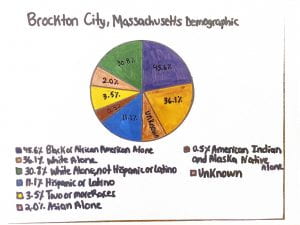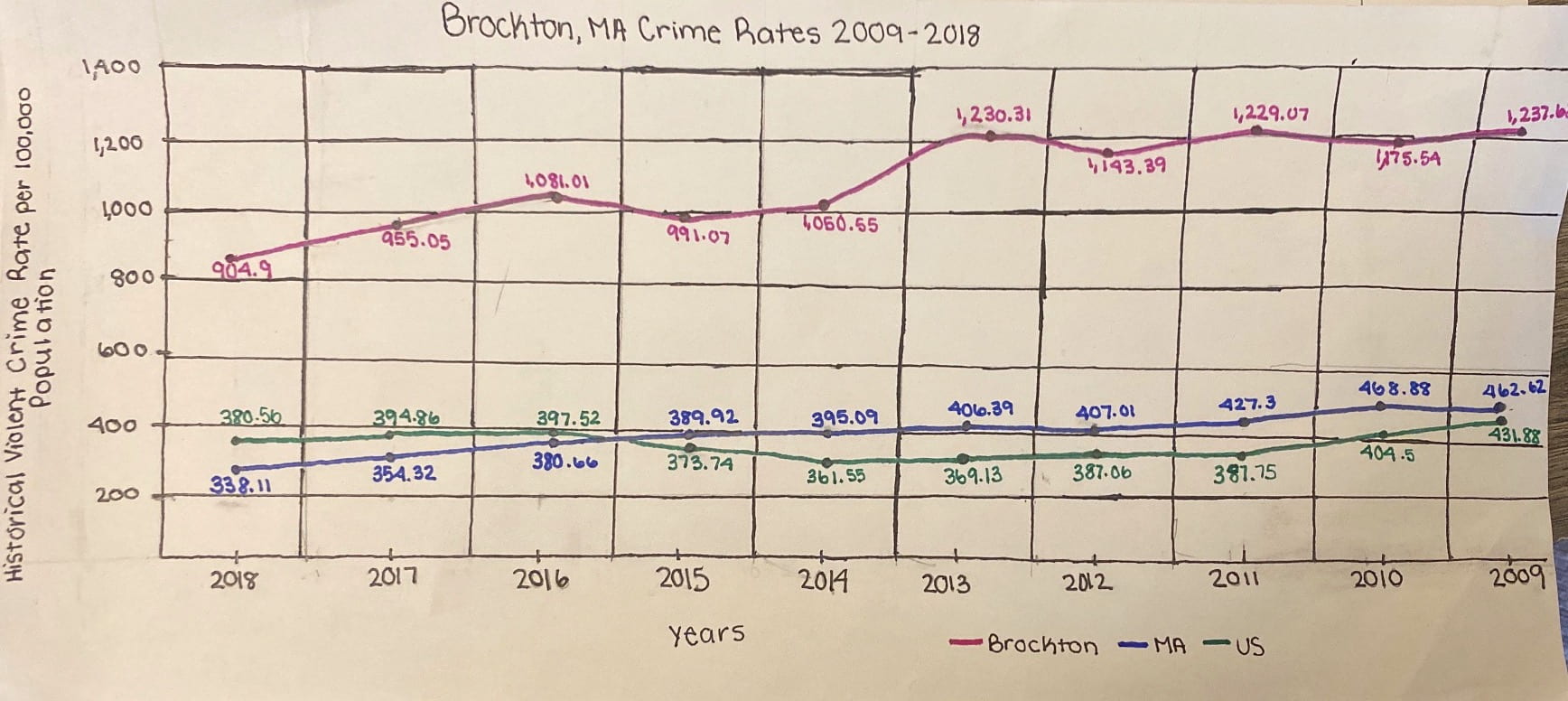Let’s Start with a little History, Shall We…
Historically the city of Brockton was a major industrial hub during the nineteenth century earning the nickname “the shoe city,” seeing as the city was one of the largest manufacturers of men’s shoes on the south coast. By all accounts Brockton was one of the wealthiest, productive, and fast-growing cities in the region. Holding one of the highest employment rates, thus creating an affluent community that could afford to install one of the first municipal sewers systems within the country. However, due to constant economic hardships starting with the Great depression, both recessions, and white-flight the city’s industry declined dramatically. White flight is defined as the sudden or gradual departure of whites from places like urban neighborhoods or schools due to an increase of minority groups (Bryson, 4). White homebuyers who participate in this “flight” often assume that the neighborhood is in decline due to the growing minority population.

Sadly, once residents begin to leave, housing prices tend to fall as well due to the decline in demand. As the prices plummet so does the communities socioeconomic levels. Thus, according to the Data USA approximately sixteen-percent of Brockton residents currently live below the poverty line. A number that is higher than the national average of roughly thirteen-percent. With the median income per household in the year 2020 only reaching fifty-eight thousand, which is well below the state’s seventy-seven thousand (De La Fuente).
The City’s Present Status
Currently the crime rates are higher in Brockton than 86.7% of cities in the United States (Macrotrends). When ranked on the equitable school scale the city falls quite low when compared to other school districts throughout the state of Massachusetts.
“Equity is achieved when all students receive the resources they need so they graduate prepared for success after high school” (Center for Public Education)
While Brockton’s struggling school system has turned around within the past few years, not everyone has reaped the benefits throughout the community. For those living in low to extremely low income communities school funding often falls short. As a result, children attending these school districts often do not have access to high-level curriculums nor the most qualified teachers (Center for Public Education, 6). Often times these districts also have strict discipline policies in place, such as the ‘zero tolerance’ policies that remove students deemed to be ‘problem children’ from schools. Studies have shown that children who lack the necessary learning tools and are constantly faced with excessive disciplinary methods such as suspension are more likely to be held back a grade, to drop out, commit a crime, and/or end up incarcerated as an adult (NAACP Legal Defense and Educational Fund, Inc).

How Can Community Gardens End This Injustice?
“We have a lot of
young people who are um loose on the street um it’s you know a good idea. It’s projects that um maybe the government could look into using some of these young folks to get involved and do something” (Karlene Palmer)
If implemented community gardens can play a crucial role in ending the school-to-prison pipelines discussed above. Cities like Albany, New York have already begun to implement gardens and farms such as the Soul Fire Farm. Where their primary goal is to help convicted teens pay their restitution rather than serving time in juvenile detention centers. Within these programs teens are able to learn job skills while earning money to pay off their debts. However, as the staff at Soul Fire Farm described it “we saw Project Growth as an opportunity for these young men to heal relationships with their communities, the land, and themselves, as well as to recognize their potential to be agents of change in society” (Penniman, 6). Thus, incorporating gardens within the community will allow local residents especially young at risk youth to escaping the toxic cycle which has been accepted as their norm. 